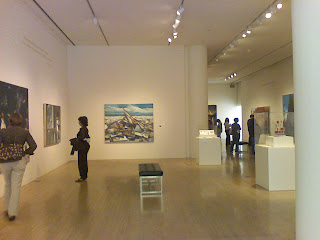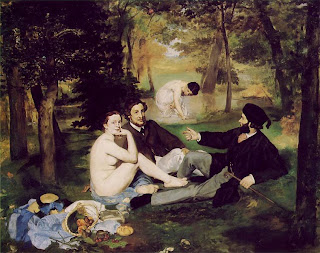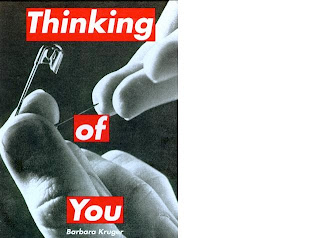
The other day, I met up with Patrice Lamothe, CEO of Pearltrees. It was an interesting meeting, and I mentioned to him that I'd gone to the San Francisco Museum of Modern Art earlier that day. Funny thing is, Patrice is from Paris. So, there's something of an irony there, if you think about it....
I tend to fall into ironic conversations with people quite often. Guess that could be because I'm unassuming and don't necessarily pass value judgements--esp. when it comes to art. It's not that I don't know anything about classical art: I started my college career as a Fine Art major, and had to take art history. So, I get the basic gist of the importance of art in the culture of countries like France.
But to say that is not to value the importance of art to American culture as well. Our art, however, doesn't have quite the same long history, nor does have quite the same affect....
I loved the study of art history: how art reached a height during what we commonly call the "ancient" world of Greece and Rome, only to be lost during the Dark Ages. How it took forever for artists to figure out to sculpt a figure in a natural pose. How it took the Reformation to bring about a change in subject matter....and so forth.
American art, though, is different. We haven't had to contend with kings and clergy dukeing it out for power. We haven't had the same kind of upbringing, so to say, that would make it shocking to see someone we know posed provocatively in a picture.

We, however, have a problem with understanding the difference between advertising and metaphor, with understanding religious symbols and imagery, with keeping words out of our art...
Ever notice how American art is kind of wordy? From Roy Lichtenstein to Barbara Kruger, so much of our art has words in in. Or it is a single color canvas, European art, even modern European art, just isn't as wordy nor as monochromatic.

American art is also deeply personal. For the centuries that European art has been produced, it often wasn't particularly with the sense of art as personal expression--perhaps not until the Renassance. That's not to say there wasn't personal expression in European art--it's just that, well, American art seems so heavy with it..
In American art, it's always been there. Maybe because America as a state of creativity comes about way after those struggles for creativity and self-expression in European art....
I don't know, I'm just speculating...
But American art isn't necessarily there to get us to think about God, or to admire our monarchs, or to express some religious or mythical allegory. These things bleed through from time to time--but our sense of what is allegory and mythical, of who our kings are (elected, not born) and what God is to us is drastically different.
We also have a thing about abstraction. Most of the American art I've viewed over the past two days--in San Francisco and in San Jose--has been abstract. If not abstract, surreal or hyperreal. It seems to me that we have more of that than we do of classical art (although, yes, there's the Hudson River School and all that) And even what looks something akin to classical art--works by Thomas Eakins or John Singer Sargent--are still shockingly American in their subject matter and style.
In other words, American art, just doesn't look, nor does it feel like the art of France or Italy or Spain or anywhere else in the world. It is a strange amalgam of nothingness and being, of the future with a very immediate past that blends and makes up what is present and today. To understand some of our artists you have to understand so much of the past, while with others, you need to know nothing other than the at-that-moment images they are giving you from one slice of their lives or just of their psyches.
So maybe, in some sense, it's not all that ironic nor strange to discuss art from an American viewpoint with someone who is from Paris, where some of the world's masterpieces reside. We do occupy the same world today, a world where imagination shapes technology, and, to some, technology is itself a form of art.....
Think about it...
No comments:
Post a Comment